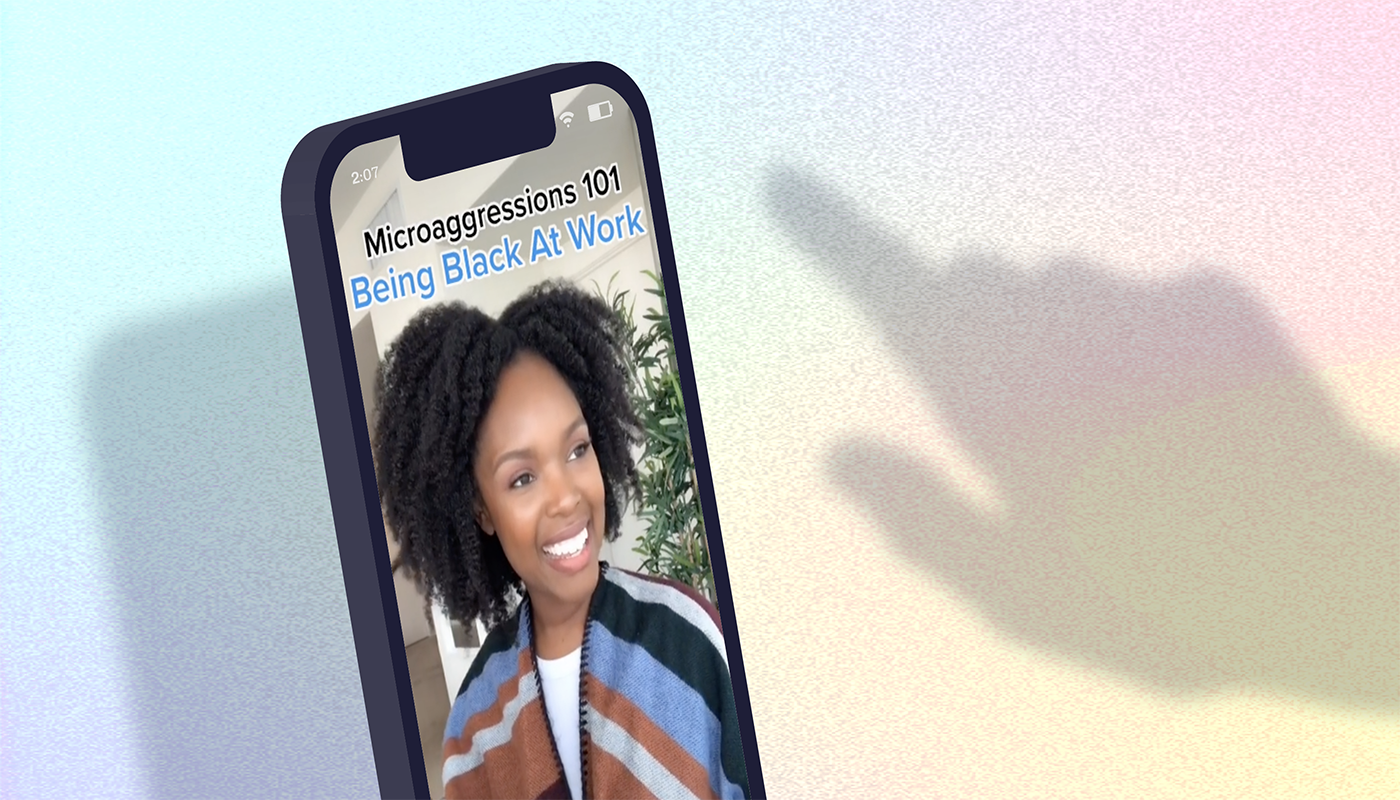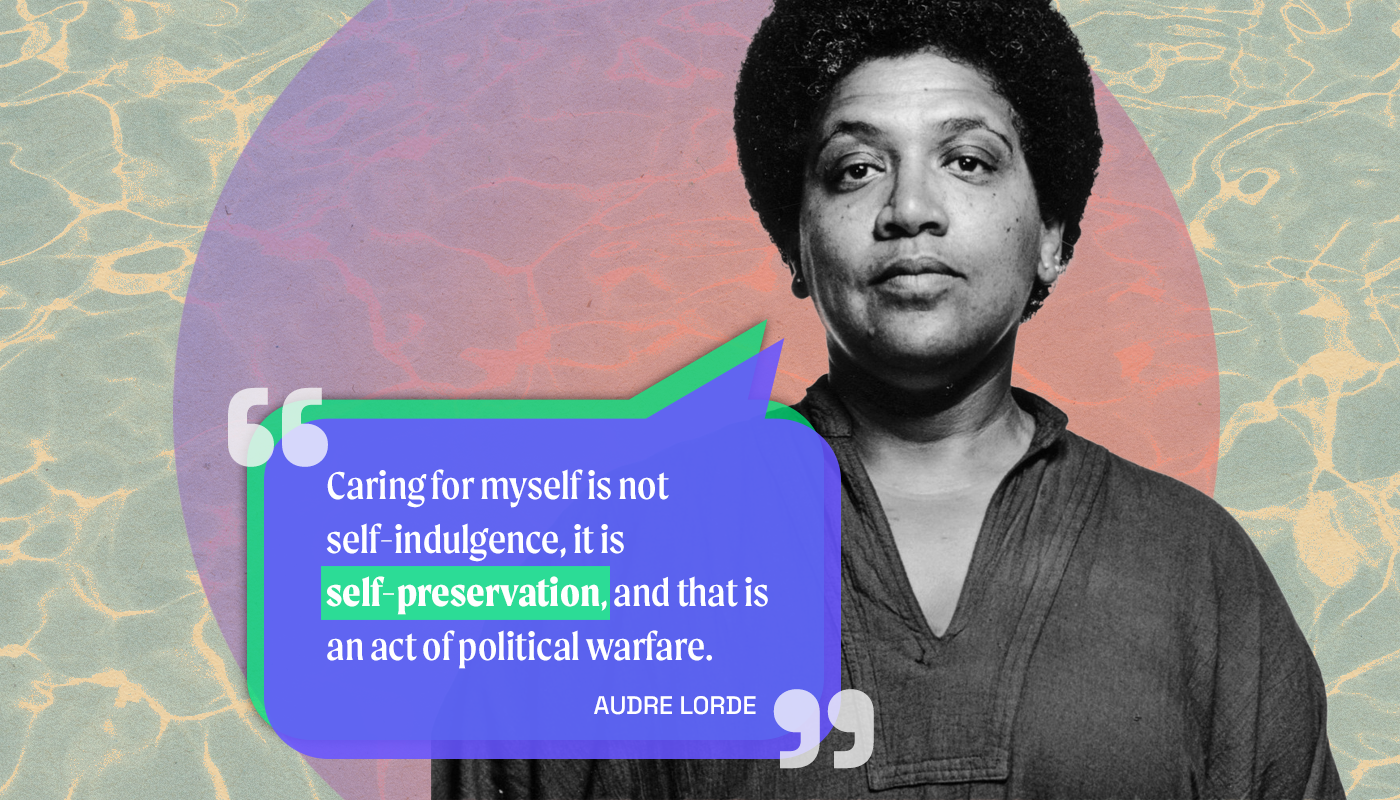Interrupting racial microaggressions
How to proactively combat this harmful behavior.

Let’s be clear. Just because it’s called “micro” doesn’t mean it’s not a big issue.
Racial microaggressions are a concern for people of color and can have a negative impact on the experience in the workplace. They are often indirect and seemingly subtle in nature, but they have the harmful effect of demeaning the recipient by reinforcing attitudes of racial superiority perpetrated by the offender.
Microagresssions
The term ‘microaggression’ refers to the statements, actions, and/or behaviors, that are leveled against a group of people who have been traditionally marginalized or excluded within society. It can happen to people of different neurodiversity, genders, sexual-orientations, races/ethnicities, and abilities. Microaggressions send a harmful message that one group holds and maintains power over another.
Racial microaggressions, specifically, perpetuate myths and prejudices around race — not to mention that they are extremely offensive. Left unchecked, they can become culturally accepted within the workplace over time and present a problem for employees of color, who are forced to operate in an environment that reinforces a culture of racial dominance over them.
@jazmynjw Me working in Silicon Valley #blackatwork #microaggressions101 #comedy
Examples of racial microaggressions include veiled insults and invalidations around race and ethnicity. They can also form part of discourse relating to intersectionality, supporting language and behaviors that whilst subtle in nature, are extremely powerful in the way that they impact employees from marginalized communities.
Microaggressions are harmful and can damage wellbeing and careers
Microaggressions are counterproductive to creating a sense of belonging and can lead to high employee turnover of Black and Brown employees. They also have a lasting negative impact on a person’s ability to perform effectively within the workplace, which impacts health and wellbeing.
One study found that African American students experienced more depression, self-doubt, frustration, and isolation that impacted their education as a result. These impacts are transferred into the workplace and have similar negative effects on Black and racially minoritized employees.
The increased frustration experienced by Black and Brown workers, compounded by racism outside of the workplace, is cited as a contributor to increased instances of mental and other health issues amongst communities of color. These include increased rates of depression, anxiety, and prolonged stress and trauma. Increased risk of heart disease and type 2 diabetes has also been cited as an effect of prolonged exposure to racial microaggressions; the impact of racial microaggressions goes far beyond a culture of “banter and having fun.” It negatively affects the physical and mental wellbeing of colleagues.
How, then, do leaders move forward to prevent these problematic behaviors from their or their colleagues’ everyday experience?
Preventing microaggressions in the workplace
The place where policy and practice meet is critical for investigating organizational bias that might perpetuate a culture of microaggression. Leaders at all levels can develop practices that serve to enable a proactive stance against microaggressions in workplace culture. Here are some practical things that you can do to reinforce inclusion:
Counter with microaffirmations.
@benjy_lookbook How you can promote inclusion using #microaffirmations 🤎 #learnontiktok #microaggressions #microaggressions101 #inclusion #fyp #inclusionmatters
Like Tiktoker @benjy_lookbook explains, microaffirmations build on one another, creating a positive cycle of inclusion.
Microaffirmations
Tiny acts of opening doors to opportunity, gestures of inclusion and caring, and graceful acts of listening.
Several examples include opening doors to opportunity, giving credit, affirming emotional responses, and recognizing different experiences.
Hack
Practice microaffirmations during introductions by asking how to pronounce someone’s name and then learning it correctly.
Listen when people share their concerns.
It can be emotionally draining to experience and address, let alone share concerns of offensive language and behaviors. Do not feed into your colleagues’ fears by not taking appropriate action around instances of microaggression. You will only add to their concerns. As an ally, be supportive and deal appropriately with issues as they arise in a speedy manner. While a pattern of harmful language likely requires a managerial response, anyone can interrupt racial microaggressions.
Hack
Address the microaggression by responding with a non-judgmental observation or asking a thoughtful question.
This will create a moment for the speaker to consider what they just shared and offer support to your colleague without escalating the moment.
If you’re a person of color navigating how to address microaggressions, consider this framework DEI experts shared with Harvard Business Review.
Encourage a learning environment.
Become involved in activities that allow you to step outside of your own experience! This can help you better understand the concerns of people from other racial and cultural groups, which will enable you to develop a culture of inclusion within your workplace.
Hack
Foster a learning environment by celebrating diverse holidays. Invite outside speakers to educate the team on the holiday, expanding understanding and validating the experiences of those who celebrate.
Showcase the talent of people of color.
Enable an inclusive environment by showcasing Black and Brown talent. Not only with this increased visibility of your colleagues’ successes and skills, it also combats the narratives underlying microaggressions. This practice, at both the individual and organizational level, makes all the difference.
Hack
Sponsor marginalized coworkers by inviting them to new rooms, nominating them for new opportunities, and touting their achievements to others.
Research by Tsedale M. Melaku shows “sponsorship was shown to be critical to Black women’s access to significant training, development, and networking opportunities and advancement.”![]()






